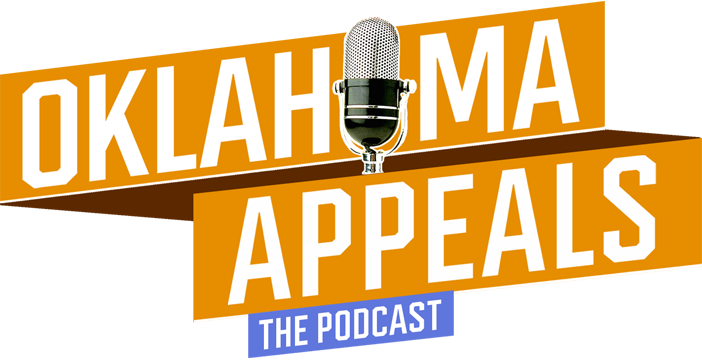| Opinion: | Griggs v. New Dominion, 2022 OK CIV APP 42 |
| Subject Matter: | Civil Procedure–Class Actions |
| Date Decided: | October 26, 2022 |
| Trial Court: | District Court of Logan County; Judge Corley |
| Route to this Court: | Plaintiffs Griggs and Marler, on behalf of themselves and other similarly situated Oklahomans, appealed the trial court order granting the motions to strike the class allegations in Plaintiffs’ class action petition, motions which were filed by Defendants New Dominion, LLC, Kirkpatrick Oil Company, Inc, Rainbo Service Co., D&B Operating LLC, Mid-Con Energy Operating, LLC, Orca Operating Co., LLC, Territory Resources, LLC, Devon Energy Production Company, L.P., TNT Operating Company, Inc., White Operating Company, Dryes Corner, LLC, White Star Petroleum, LLC, Equal Energy UN Inc., M M Energy, Inc., and Wicklund Petroleum Corporation. |
| Facts: | Plaintiffs brought this class action lawsuit alleging Defendants’ disposal of wastewater from fracking operations triggered several earthquakes resulting in extensive damage to real and personal property across the areas in question. Plaintiffs’ first amended class action petition filed October 24, 2017, seeks certification of a plaintiff class comprised “of a class of Oklahoma citizens owning properties within Logan, Payne, Lincoln, Creek, Oklahoma, Canadian, Kingfisher, Garfield, and Noble counties during the dates of the induced seismicity between March 30, 2014 to present.” Plaintiffs identify nine groups of earthquakes clustered according to location which they allege were induced by wastewater disposal injection into Oklahoma’s Arbuckle formation and which have caused physical and emotional damage to the plaintiff class. Defendants argued the class allegations should be stricken for failure to meet the requirements delineated in 12 O.S. § 2023. The trial court ruled on this matter that there were 26 defendants with a bunch of different earthquakes and a bunch of clusters, therefore, there is no way it could believe that plaintiffs could show commonality as it related to the class certification. Plaintiffs eventually filed a motion for appropriate relief in July 2020 asking the trial court either to enter an order adjudicating Defendants’ motions to strike or to allow Plaintiffs to re-brief the class certification issue based on more recent appellate court decisions. The trial court upheld its previous holding regarding the class certification and affirmed the Motions to Strike. |
| Standard of Review: | A trial court order certifying a class action “shall be subject to a de novo standard of review by an appellate court reviewing the order.” 12 O.S. Supp. 2020 § 2023(C)(2); see also Marshall Cty. v. Homesales, Inc., 2014 OK 88, ¶ 8. |
| Analysis: | The first portion of the applicable statute to turn to was 12 O.S. Supp. 2020 § 2023(A), which contains the requirements of numerosity, commonality, typicality, and adequacy of the representation. The primary issue before the Court was whether Plaintiffs could meet the commonality requirement. The difficulty with this is that “[a]ny competently crafted class complaint literally raises common questions.” Wal-Mart Stores, Inc. v. Dukes, 564 U.S. 338, 349, 131 S. Ct. 2541, 2551, 180 L. Ed. 2d 374 (2011). This meant that Plaintiffs were required to show that the purported class of persons who suffered the same injury will share answers to common questions of law or fact. The Court relied on Defendant’s brief which pointed to a case from the Western District of Oklahoma–West v. Chapparal Energy, LLC, 2018 WL 8264338 (2018)–where the class was denied based on similar facts. The Western District Court pointed out that each earthquake was caused by different defendants, and some defendants were not causes of other earthquakes. Also, some of the plaintiffs did not suffer the same damage and injuries as others from different earthquake swarms. Thus, the plaintiffs failed to establish causation by demonstrating some reasonable connection between the act or omission and the damage which the plaintiffs suffered. Thus, the dissimilarities within the proposed class were precluded by Rule 23 of the Federal Rules of Civil Procedure. The Court therefore agreed with the trial court that each class member had to show that a defendant’s actions caused an earthquake which resulted in property damage to that member, thus, the evidence needed to prove each Defendant’s contribution to causing an earthquake will differ as Plaintiffs would have to connect a given disposal well to causing a given earthquake that caused Plaintiffs’ injuries. Here, there were several Defendants and nine clusters of earthquakes that occurred from 2014 to 2017 in nine different counties. The class questions could not generate answers common to the class and no single set of facts will resolve whether any Defendant caused a given earthquake. The Court also determined that Cooper v. New Dominion, Case No. 117, 281 (November 15, 2019) was distinguishable from this case because that case involved one plaintiff who asserted that one defendant caused three earthquakes during a three-day period. Then, the Court determined that Gentry v. Cotton Electric Cooperative, Inc., 2011 OK CIV APP 24, was distinguishable as well because the plaintiff class asserted that one electric company caused a fire that burned down all of the plaintiffs’ houses. There was only one cause in dispute, whereas in this case there were several defendants, several causes, and several events that allegedly caused damage. |
| Outcome: | Affirmed and Remanded. |
| Vote: | 3-0. Blackwell, J., Fischer, C.J. (sitting by designation), and Wiseman, P.J. (author) concur. |
| Other: | The Plaintiffs requested that in the event that the Court affirmed the trial court’s decision, that the Court enter an order “allowing the members of the class to file their individual claims as to the alleged nine areas of seismicity” consistent with Oklahoma law. The Court declined to address that issue and remanded the issue to the trial court. |
